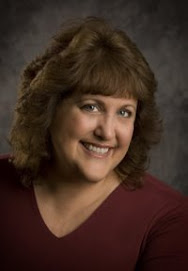 Appearing on a radio or television show can be an important part of your book publicity efforts. But for some authors, especially those who spend the majority of their time in front of their computer screens writing, the thought of appearing on camera or tape can be terrifying. To help you get ready to for that infamous close-up, here are some tips for appearing in-studio for radio and television interviews:
Appearing on a radio or television show can be an important part of your book publicity efforts. But for some authors, especially those who spend the majority of their time in front of their computer screens writing, the thought of appearing on camera or tape can be terrifying. To help you get ready to for that infamous close-up, here are some tips for appearing in-studio for radio and television interviews:1. Once you’ve booked an appearance at a radio or television station, find out who will be doing your interview. Make sure that the person interviewing you has a copy of your book in advance and, in addition to your press release and bio, a Q & A or FAQ sheet with standard questions, so that s/he is prepared for your segment.
2. Give yourself plenty of time to get to the studio where your interview will be taped/shot. Confirm directions and parking availability, and allow between 1-2 hours for the interview.
3. For television interviews, most media outlets recommend that your attire be business casual. If you’re not given specific instructions by your publicist or media contact, plan to bring several options for the wardrobe department to consider. Try to avoid solid black, solid red, solid white, super busy prints and shiny fabrics. Also, remember that in some interviews, the viewers will only see you from the waist up, so, it may not matter what kind of shoes or trousers you wear. Usually there is a wardrobe person on set who can steam your clothes to ensure they are ready-for-camera. And there are often some additional wardrobe options available on set.
4. Women who are interviewed on television should also consider bringing a few jewelry options to go with the outfits they bring along. Smaller jewelry may be harder to see on camera, so bring necklaces and earrings of varying sizes. Men should plan to bring along extra ties with different color schemes (avoid busy or wild prints and shiny fabrics) to go with their shirts and jackets.
5. When you arrive on set, often your first stop will be make-up. If you have allergies to certain products or are wearing hard contact lenses, be sure to tell the person doing your make-up ahead of time (I once lost a contact lens when a make-up person got too ambitious with her eye shadow brush while prepping me for a commercial shoot).
6. After make-up and wardrobe, you’ll be escorted to the stage area of the studio, where you’ll be seated in a chair and interviewed by a producer or news anchor. S/he may ask you questions ahead of time to get a sense of how you respond. Use any prep time you’re given to ask questions you might have about speaking into the microphone or where to focus your gaze during the interview.
7. When sitting in front of the camera, remember to sit up straight and try not to tilt your head when you talk. Also, be sure to look at whichever camera you’re instructed to face, even if there are lights or other cameras off to the side. While the interviewer is asking questions, look directly at him or her, and don’t forget to smile!
8. When answering questions during radio and television interviews, it’s a good idea to rephrase the questions you’re asked, so that they are somehow included in your answer. For example, if you’re asked how long it took to write your book, you might answer, “It took me three years to write the first draft of My Great Novel," rather than simply, "Three years." Try to answer in complete sentences, and be sure to use the title of your book as often as possible.
Note: If you have issues with your voice, practice speaking into a tape recorder before doing radio interviews. Play back your recordings and notice where you may have raised or lowered your voice, or inserted too many "ums" and "ahs." Before television interviews, have someone film you on a video camera, or practice in front of a mirror. See if you’re smiling enough, if you’re keeping your eyes focused and your head is straight while you talk. And don’t forget to practice using gestures with your hands to emphasize points (or tone it down if you move your hands too much).
9. Try to relax and forget that you are being recorded or on-camera. Doing a radio or television interview is a great opportunity to introduce yourself and your book to potential readers. Be yourself and have fun!
10. When your interview is over, be sure to thank the producers, anchors, and staff members who helped you that day. Also, find out when your segment will air and if there are clips or CD’s available of your interview. Let everyone on your email lists and social networking sites know when your spot is airing, and don’t forget to post any clips or audio recordings of your interview on your website or Internet fan page.













